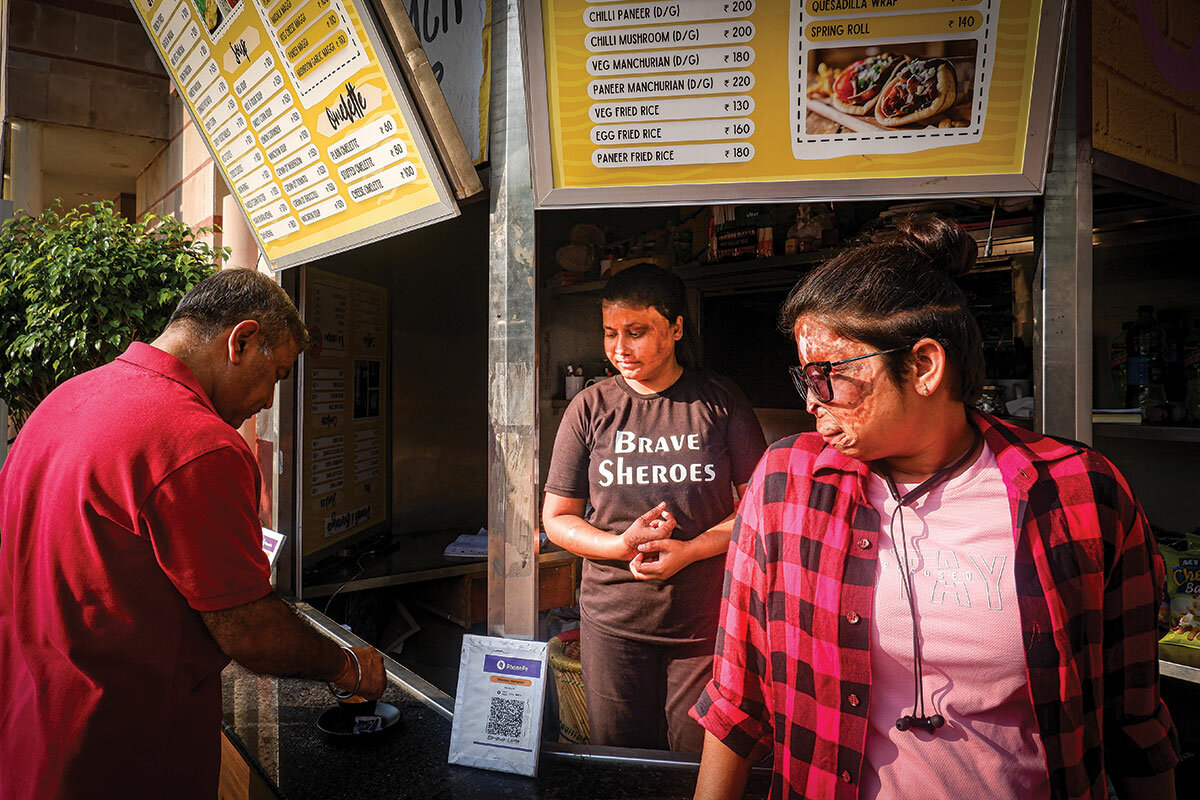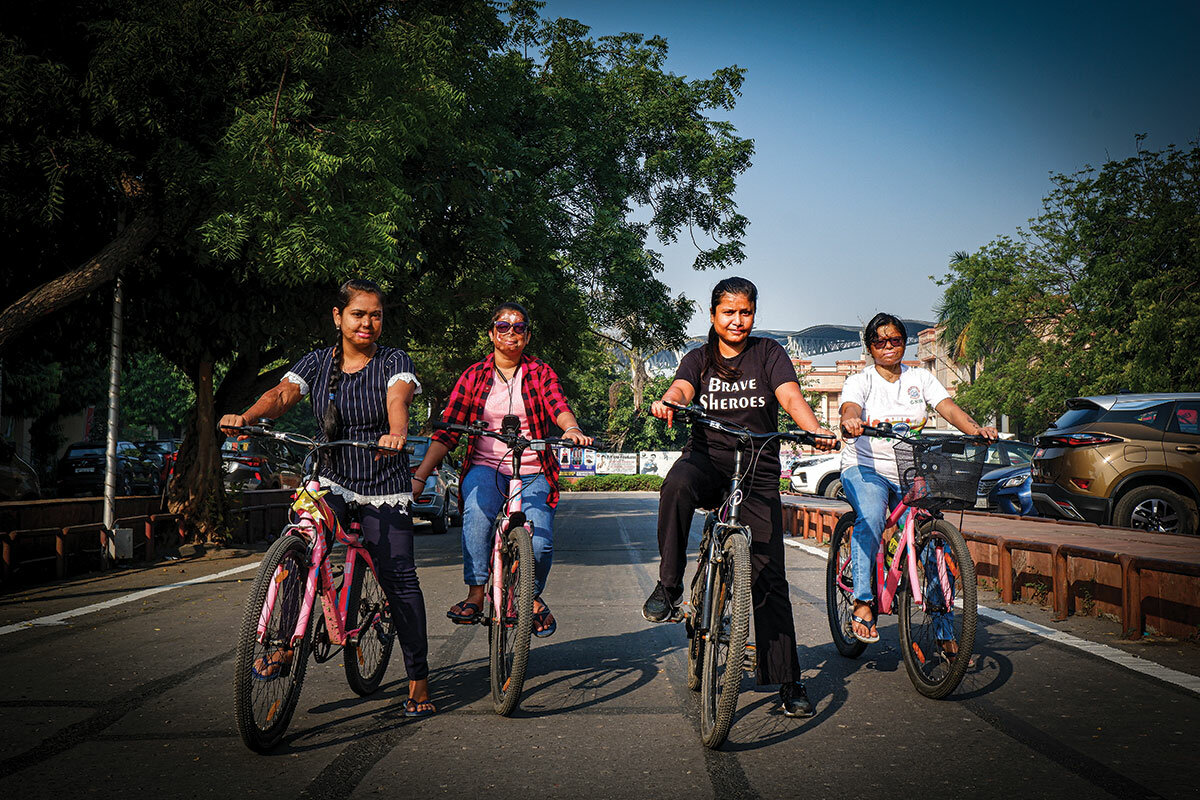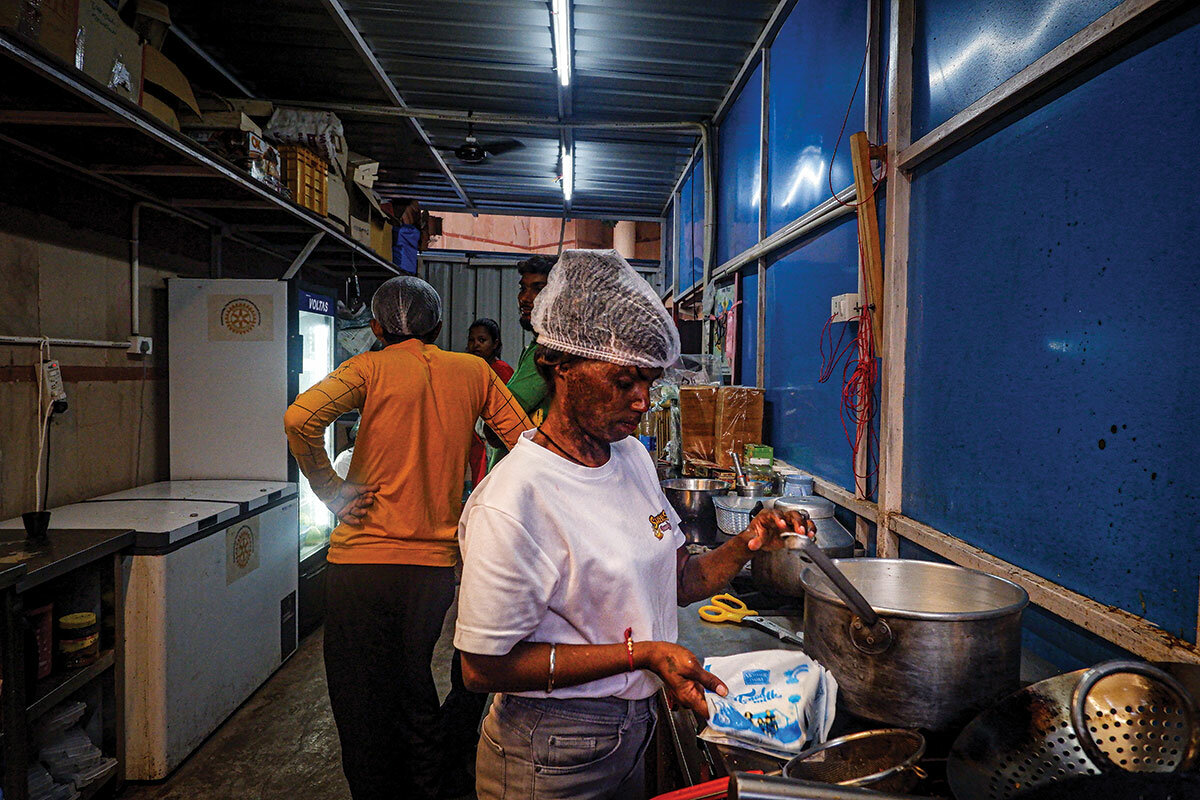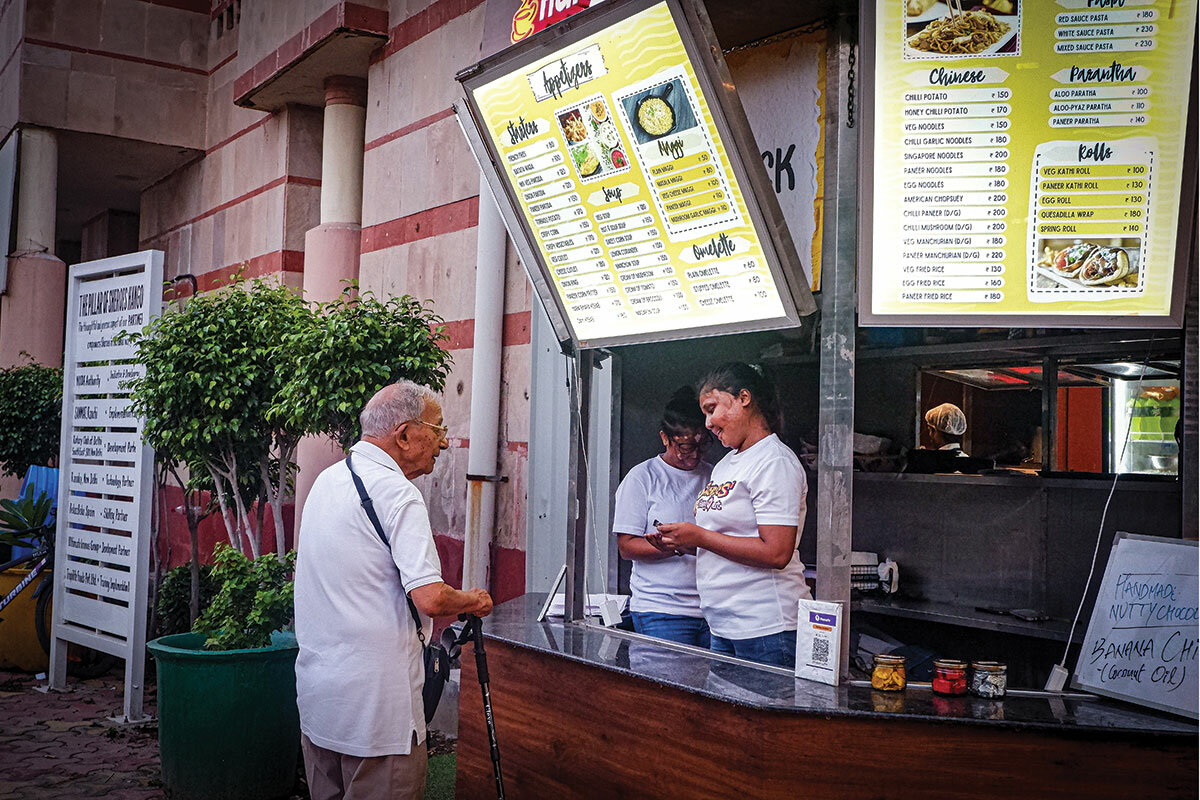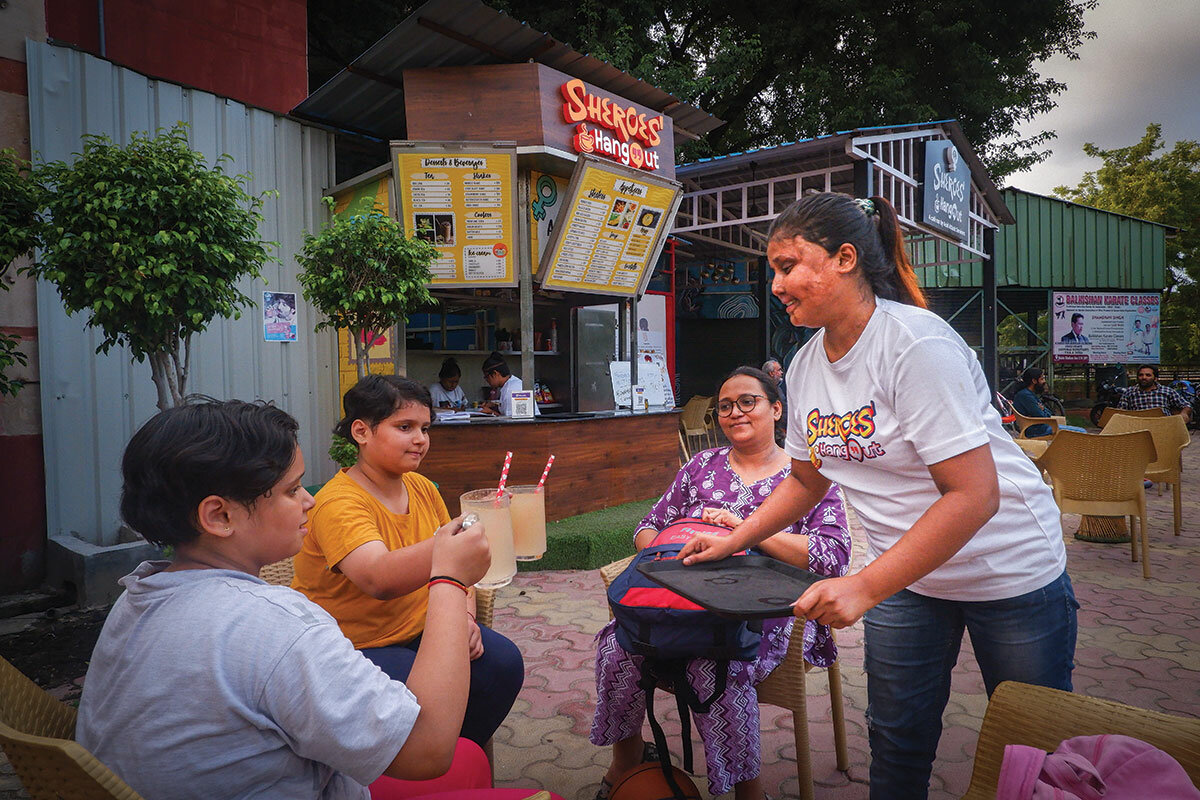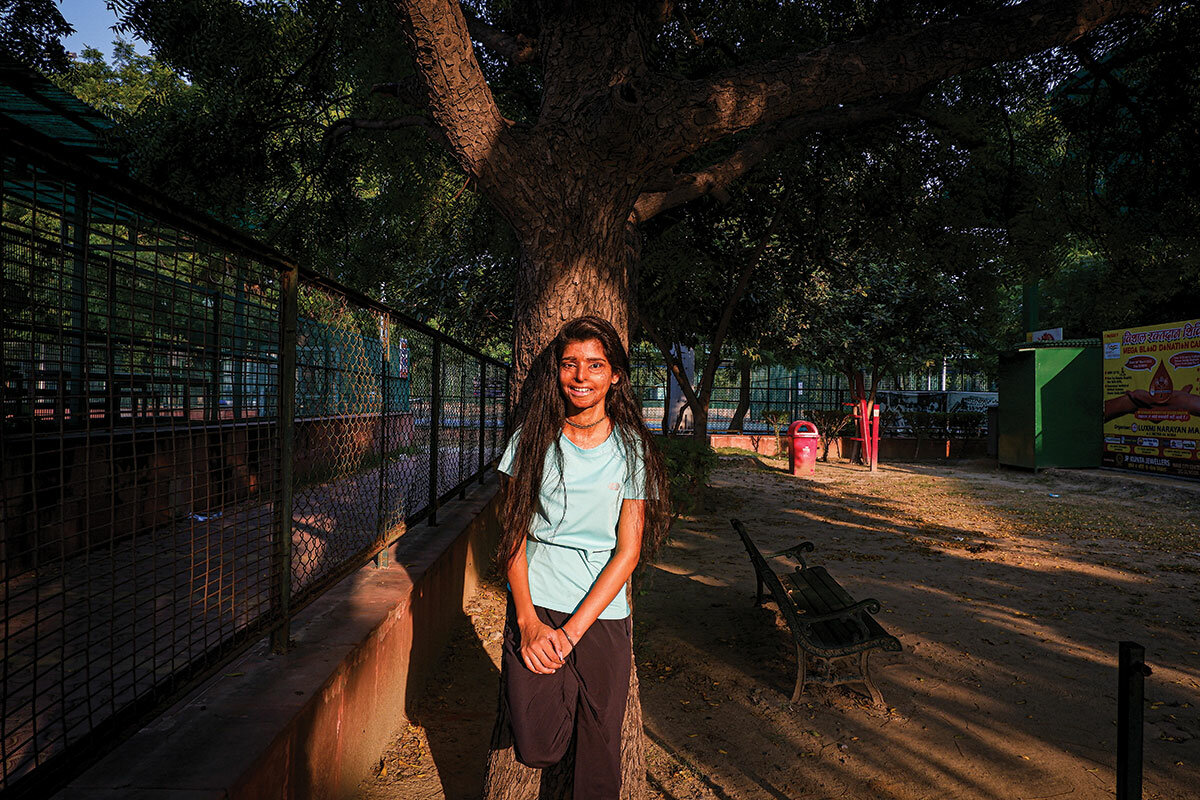In Pictures: Acid attack survivors take the lead at this Indian cafe
Loading...
| Noida, India
On a sunny afternoon, a young woman named Ritu Saini serves tea to customers at Sheroes, a cafe managed and staffed by survivors of acid attacks. These resilient women have found a supportive place where they can move forward with their lives.
Every year, hundreds of acid attacks are reported in India, with the majority of those aimed at women. The government has so far been unable to stop the violence, despite laws specifically criminalizing the attacks and restricting the sale of acid.
Ms. Saini was a lively teenager before a cousin threw acid on her face for turning down his relationship proposal. She had to undergo extensive treatment, and the attack left her with a scar.
Why We Wrote This
A story focused onIn India, the scars from acid attacks are often psychological as well as physical. A cafe run by survivors provides a sense of purpose and belonging for these resilient young women.
Depressed, she confined herself at home. It took months of her mother’s encouragement for Ms. Saini to go out without covering her face. “That attack left a deep scar on my soul. If not for my mom’s persistence, I wouldn’t have been here today,” she says.
Ms. Saini is determined to empower other women. “I got many opportunities, thanks to the cafe,” she says.
She is joined by five other women, all of whom have stories of pain and resilience to share. Among them is Anshu Rajput. She was 15 when a man threw acid on her face. She underwent multiple surgeries to save her eyesight. “The harder part, though, was to overcome the numbness, and that is something I would not have been able to do without Sheroes,” she says.
The cafe is a project of the Chhanv Foundation, a nonprofit organization in India working for the rehabilitation of acid attack survivors.
Ms. Rajput intends to become a motivational speaker and help people struggling with thoughts of suicide. “I want to tell people to never give up. No matter how hard life gets,” she says with a smile.
Another survivor, Seema Rajput (no relation), recently arrived at the cafe. She finds hope from working with her colleagues. “These girls are like my sisters,” she says.
Customer Ajay Sharma says whenever he feels low, he heads to the cafe. “You see these girls running it; they are amazing and special. I have never witnessed such determination and grit in my entire life. They heal me,” he says. “They are like my daughters.”





